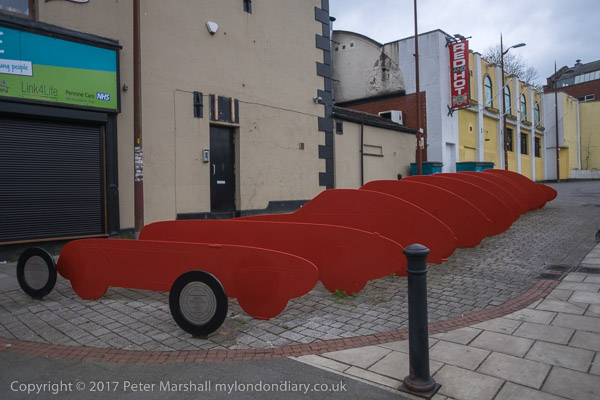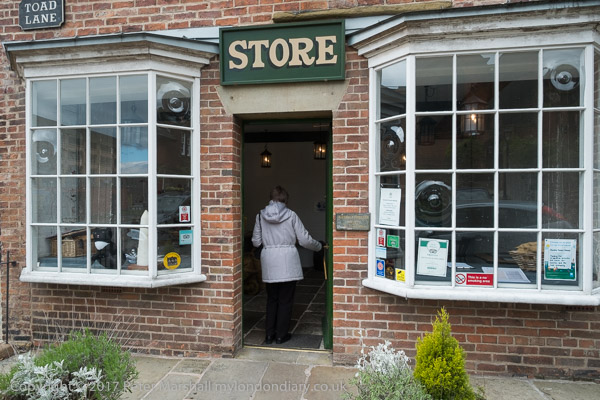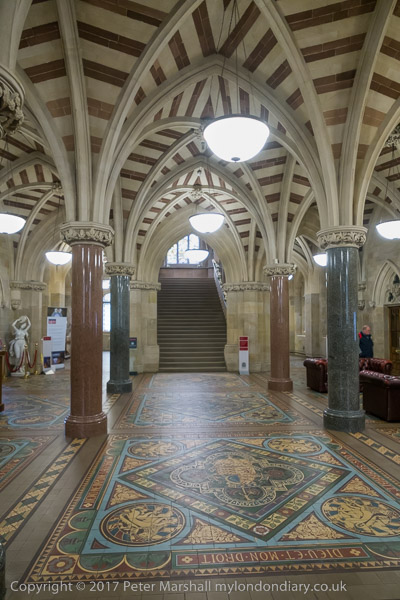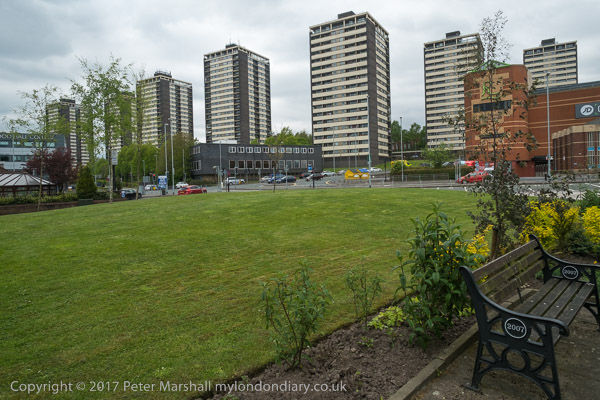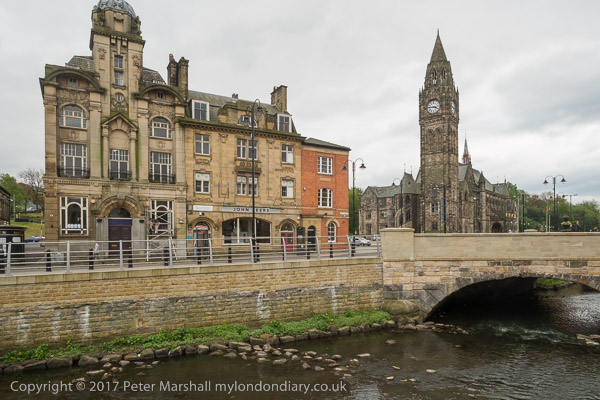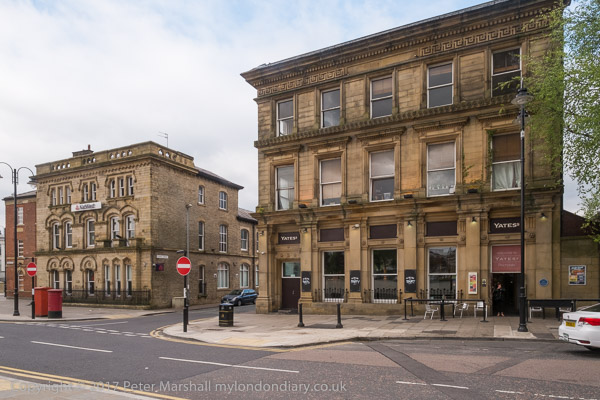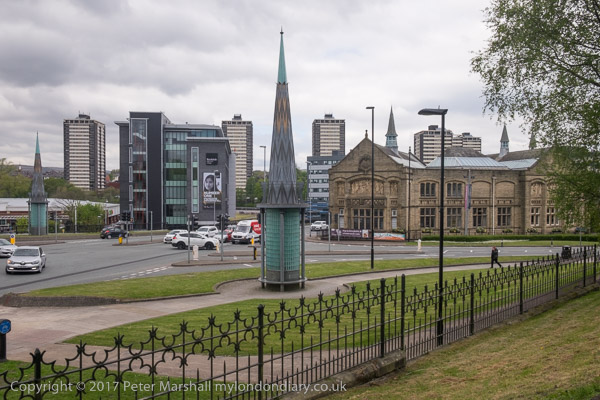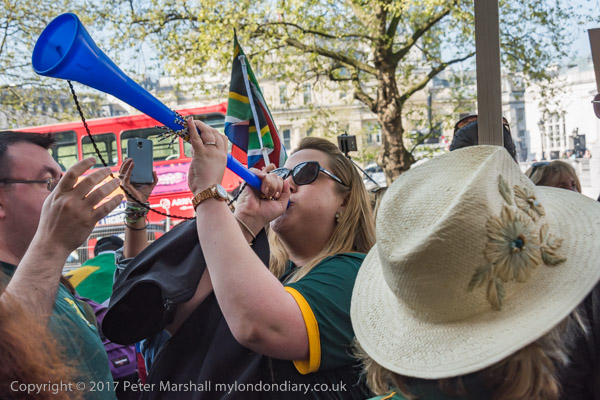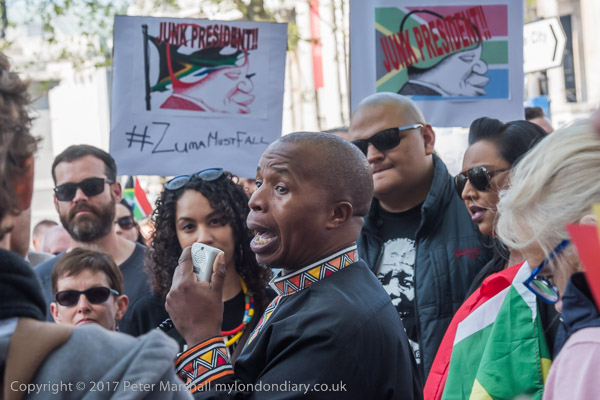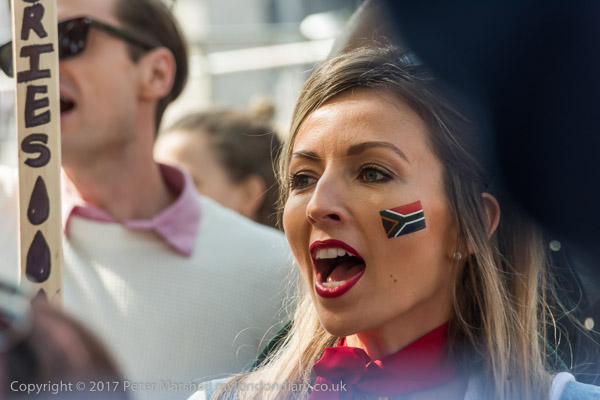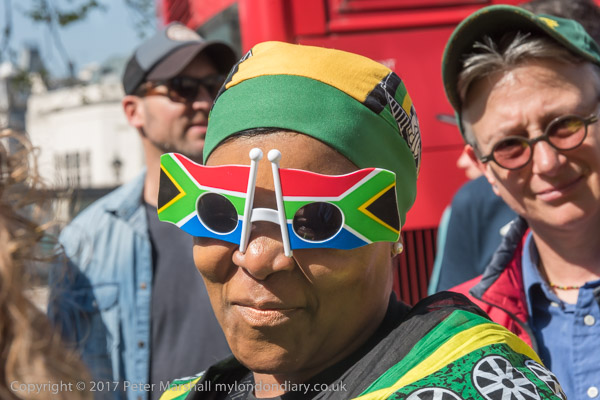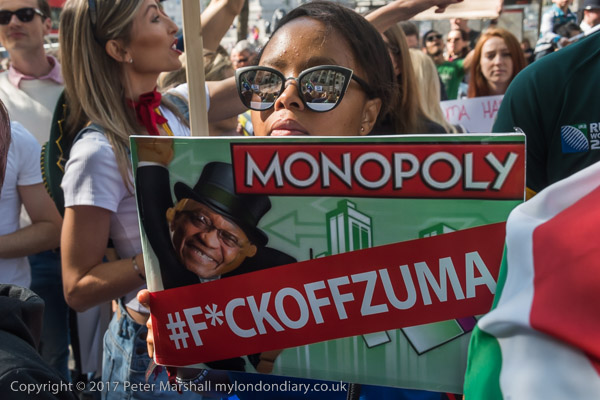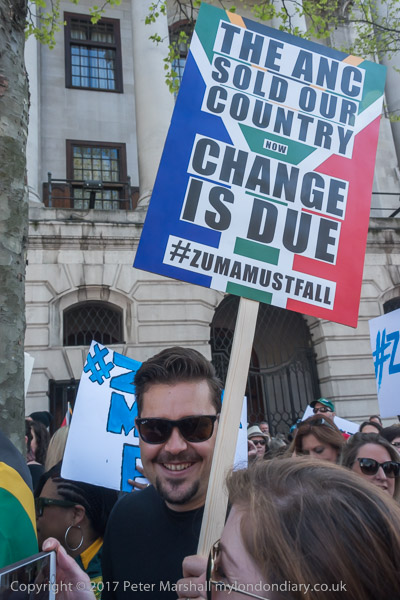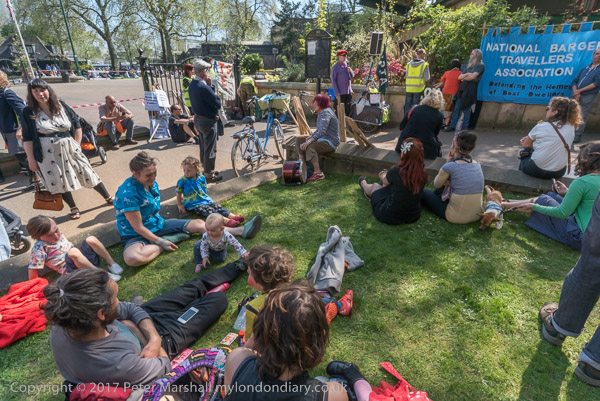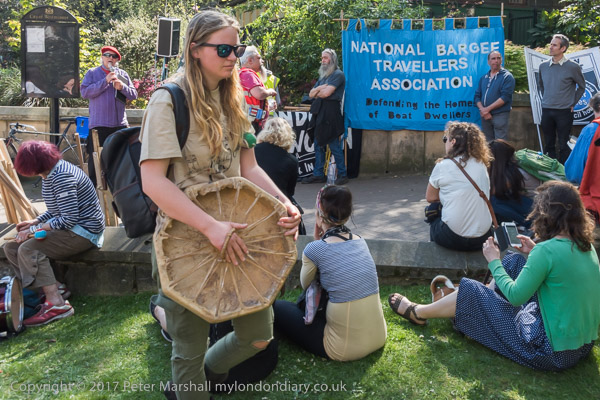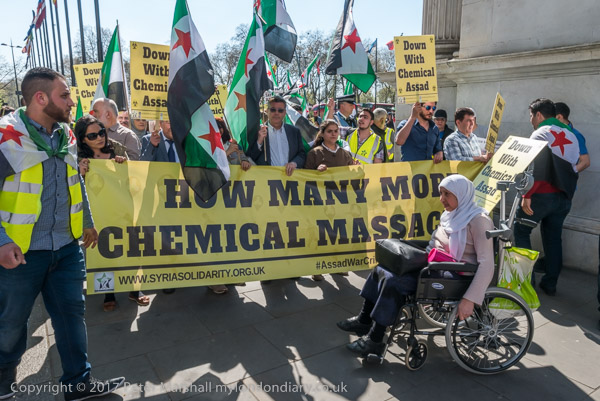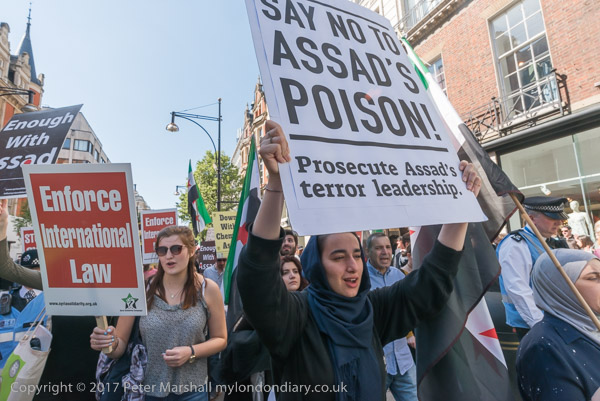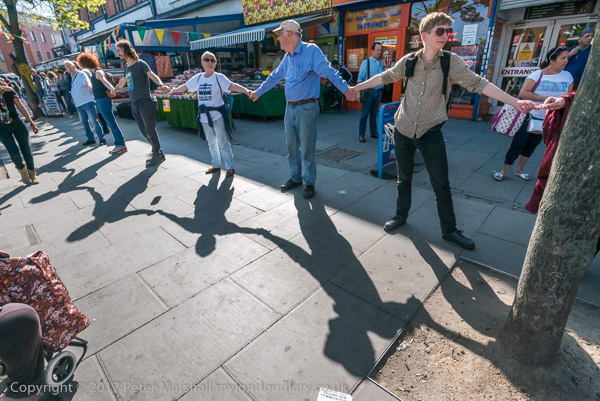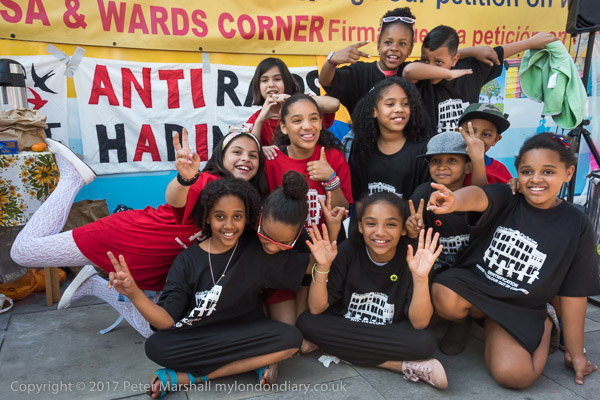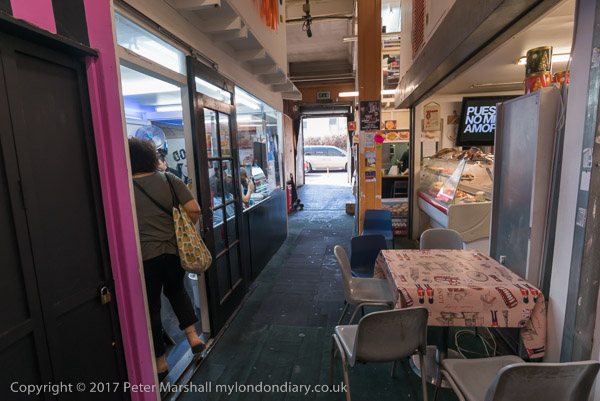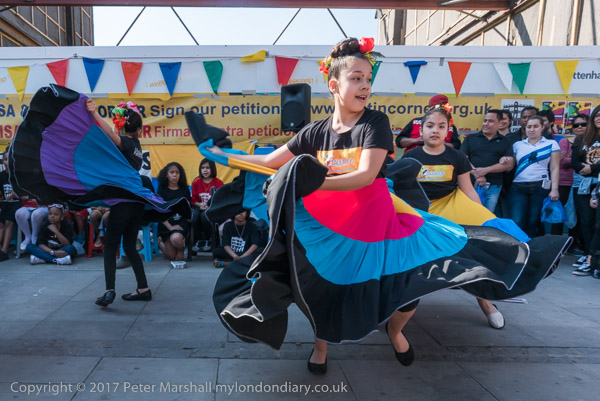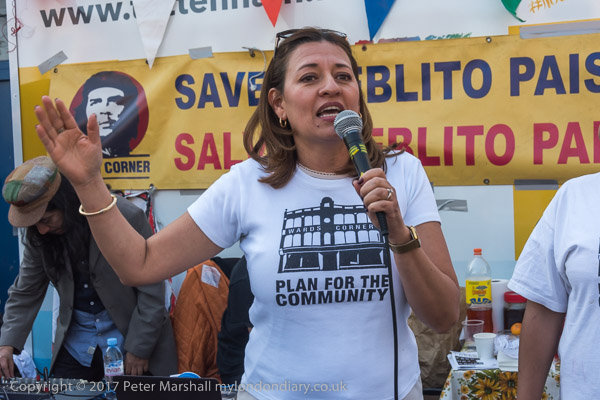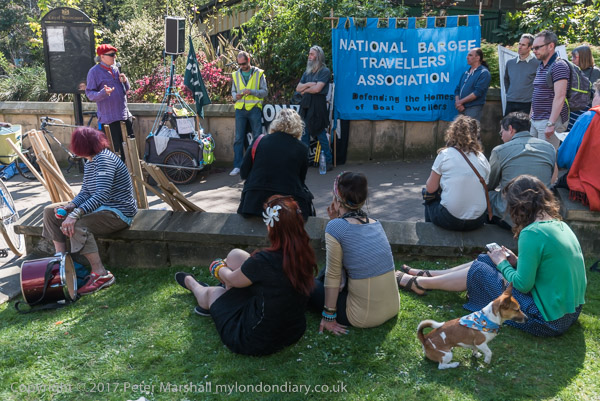Seven Sisters and Walthamstow High St: On Sunday 24th September 1989 I returned to north-east London to continue my walks, this time starting a little to the west on the Middlesex side of the River Lea at Seven Sisters in Haringey. The Lea (or Lee), London’s second largest river, has been a significant boundary at least since the Iron Age when it separated the Catuvellauni from the Trinovantes, later the Middle Saxons from the East Saxons, then England from the Danelaw and until 1965 Middlesex from Essex (though some of Middlesex by then was in the County of London.) It still separates Haringey on the west from Waltham Forest on the east.
I can’t remember now why I got off the Victoria Line at Seven Sisters and took a short walk from there on my way to Walthamstow, but possibly there was a temporary problem on the Victoria Line which terminated My train there. But I found this part-demolished house, once quite grand, at 176 St Ann’s Rd in South Tottenham.
The sign above the door is for N Nicolau who had manufactured dresses, jackets, skirts and slacks here, though I think the advertisement for vacancies for machinists, finishers and pressers was rather out of date. There were still plenty of clothing sweatshops in the area, and many were Greek or Cypriot run companies.
This house has been rebuilt in a rather plainer fashion, but there are still some other houses of a similar age on the street, largely developed in the later Victorian period. This is now in the St Ann’s conservation area around the church which was consecrated in 1861. The new building here is mentioned; “constructed of London stock brick … white rendered square bays and a slate roof and respects the character and appearance of this part of the Conservation Area.“
I liked the PIANOS sign surrounded by keyboards, though the 13 octaves on both top and bottom seemed excessive – our Broadwood manages with only seven and a few extra keys.
J Reid Pianos was established in 1928 and are still in business at 184 St Ann’s Road. You can buy a Reid Sohn piano from them, though these are now made in Indonesia, and they sell other makers too, with the “largesst selection of quality pianos in London“. They have also restored many pianos from “Barraud, Bechstein, Bell, Bernstein, Bluthner, Bosendorfer, Boston, Brinsmead, Broadwood, Carl Schiller, Challen, Challen, D’Este, Erard, Fazioli, Fenner, Feurich, Gaveau, Gebruder, Grotrian, Hoffman, Ibach, Kawai, Kemble, Knake, Knight, Lipp, Matz, Pleyel, Pleyel, Reid-Sohn, Ronisch (Rönisch), Sames, Samick, Sauter, Schiedmayer, Schimmel, Seiler, Squire, Steck, Steinmayer, Steinway (Steinway & Sons), Steinweg, Thurma, Weber, Welmar, Yamaha.“
Model cottages were an early form of social housing for the working class and began with the help of Prince Albert who was the President of Society for Improving the Conditions of the Labouring Classes. He was unable to persuade the commissioners of the 1851 Great Exhibition in Hyde Park to include the model cottages designed by the SICLC in the exhibition as they were felt to be too political but he had them built next door at Knightsbridge Barracks – and later they were rebuilt where they still are in Kennington Park.
Following this, many of the housing societies set up in the Victorian era to provide relatively cheap and decent homes for the working class built model cottages at various sites across London. Rents were set at levels those in manual work could afford but still gave a decent return to the company investors.
These Grade II listed Model Cottages are some of the earliest to be built and were perhaps a local initiative linked with the neighbouring St Ann’s School and church. They have been restored since I took this picture, and the doorway at left now has a rather austere woman’s head above it – perhaps a modern version of a Mercer Maiden?

The next picture, Car, House, Leaves, Bedford Rd, 148, West Green Rd, West Green, Haringey, 1989 89-9c-32, was one of those included with text in my book ‘1989‘.
Finally I got back onto the Victoria Line to Walthamstow Central and walked to the High St, a very different scene on a Sunday Morning that the crowded market I had photographed recently on a Saturday afternoon.
I liked the font used for BEAU.BAGGAGE as well as the STOP PRESS around the window advertising the end of season sale. There was also the three signs at the top right of the shop which somehow seemed joined together. Then there was the street furniture – the waiting man on the traffic lights, the telephone unbox at left and a lamp post with a ‘No Entry’ sign at right.
All very carefully positioned in my frame with probably a little help from the 35mm shift lens which enabled me to choose my position and then slide the lens and view a little to the right or left (and up or down) to position the frame edges where I wanted them. Most of the photographs I took were made with this lens.
Another picture of shops on the High Street, showing post-war and probably late Victorian buildings. At left is the Cakemaker’s Centre, with its picture of a balance and I think the name EASY WEIGH and in the centre the entrance to The Walthamstow Working Men’s Club & Institute.
The club celebrated its 150th anniversary in 2012 and claims to be the oldest surviving working men’s club in the country. It was founded in 1862 by Lord Henry Solly (1813-1903), British Unitarian minister, social reformer, and instigator & founder of the Working Men’s Club movement, the Charity Organisation, and the Garden City Movement.
This was a temperance club, with the aim to educate working men and free them from alcoholism. It had a library, a games room and a discussion room. The club is limited to 50 members and in 2012 all were still men. They said nothing prevented women joining but none had applied. It is still a temperance club, though members might sometimes bring a can of beer in, and as it is affiliated to the CIU, members can go to many other clubs across the country (including I think a couple in Walthamstow) and buy a beer.
Unlike most other working mens clubs which rely on bar sales this club gets an income from several of the shops whose premises it owns – I think including some in my picture.
More from Walthamstow on this walk in a later post.
Flickr – Facebook – My London Diary – Hull Photos – Lea Valley – Paris
London’s Industrial Heritage – London Photos
All photographs on this page are copyright © Peter Marshall.
Contact me to buy prints or licence to reproduce.






